We are pleased to announce the 2017 Association for Mormon Letters Awards finalists in Anthology, Criticism, and Poetry. The final awards will be announced and presented at the Mormon Scholars in the Humanities Conference, held at Brigham Young University on March 23. The finalists and winners are chosen by juries of authors, academics, and critics. The finalist announcements include blurbs about each of the works and author biographies, adapted from the author and publisher websites (if anyone wants to fix part, please write it in the reply, and I will fix it). These are the last finalists, although we will also announce the names of those to be honored with the Smith-Pettit Foundation Award for Outstanding Contribution to Mormon Letters, and the AML Lifetime Achievement Award before the conference.
Anthology
This is a new category, which may or may not appear again in the future. In the past there have been short story collections which have been recognized for awards. 2017 saw three significant anthologies published, one a collection of essays, one a collection of short stories, and one a mixture of both (as well as poetry, art and drama). So the Short Fiction and Creative Non-Fiction judges have agreed to create this ad-hoc category.
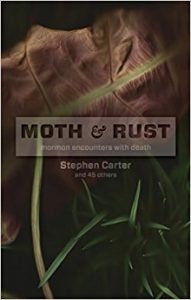 Stephen Carter, editor. Moth and Rust: Mormon Encounters with Death. Signature.
Stephen Carter, editor. Moth and Rust: Mormon Encounters with Death. Signature.
In Mormonism we are sometimes seemingly casual about death: it’s a veil or a mission call to the spirit world. But our actual encounters with the reality of death inevitably change us in ways that are difficult to articulate. In this collection, Mormon writers wrestle with mortality and its aftermath. A family sings a hesitant rendition of Happy Birthday to a grief-stricken mother who buried who toddler just a few hours earlier; an agnostic son decides he’s Mormon enough to arrange a funeral for his believing father. Some essays use death as a means to understand faith. One author imagines a world where Heavenly Mother visits her children in the form of their female ancestors, appearing to her descendants in times of grief or pain. Others address practicalities: how do you protect your children from death while still allowing them to experience the world; how do you get through one more nausea-ridden day of cancer treatment? Still others delve into death’s questions: does the overwhelming suffering that occurs in the animal kingdom have a function in the “plan of happiness”? Sometimes humorous, sometimes heartbreaking, always thought-provoking, these personal essays, poems, and stories may never be heard at a Mormon funeral. But they probably should be.
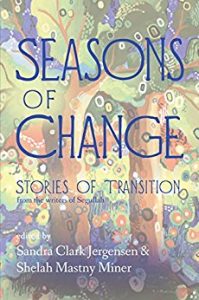 Shelah Mastny Miner and Sandra Clark Jergensen, editors. Seasons of Change: Stories of Transition from the Writers of Segullah. Peculiar Pages.
Shelah Mastny Miner and Sandra Clark Jergensen, editors. Seasons of Change: Stories of Transition from the Writers of Segullah. Peculiar Pages.
Words are new again. For over a decade, Segullah has been sharing women’s stories in our journal, blog and publications. Our first two anthologies, The Mother in Me and Dance with Them, focused on narratives of motherhood. While those stories are profound, we wish to recognize a broader scope of experience in our third offering. There are so many ways we learn, share and are reshaped through a spectrum of transitions. We crave the catharsis of writing through the change. We write trying to understand the cycles of life and embrace our reshaped selves. Joining the Church or re-examining our faith; falling in love or sharing a marriage bed for many years; sending children out on their own or taking estranged parents back into our lives; illness, divorce and new careers—all of these changes (and more) force us to examine, regroup and adapt
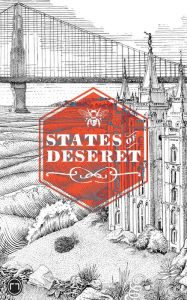 Wm Morris, editor. States of Deseret. Peculiar Pages.
Wm Morris, editor. States of Deseret. Peculiar Pages.
What if the territory of Deseret had never joined the Union and instead became its own nation? What if Leo Tolstoy or Nikola Tesla had converted to the LDS Church? What if Brigham Young had gone all the way to California instead of stopping in Utah? The genre of alternate history invites us to imagine how the past (and thus our present and future) would be different if different choices had been made. These eight stories provide glimpses at alternate historical trajectories for Mormons and Mormonism—of other states of Deseret.
Criticism
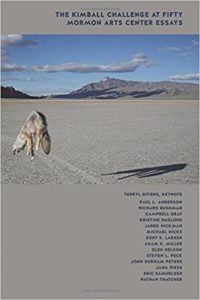 Various Authors. The Kimball Challenge at Fifty: Mormon Arts Center Essays. Mormon Arts Center.
Various Authors. The Kimball Challenge at Fifty: Mormon Arts Center Essays. Mormon Arts Center.
June 28-July 1, 2017 marked the first Mormon Arts Center Festival. Held in the Riverside Church in New York City, the event gathered together eminent scholars, artists, and musicians for an exploration of fine art by LDS members. The theme of the Festival was a speech given fifty years ago by Spencer W. Kimball, “Education for Eternity” at the beginning of the academic year at Brigham Young University, September 1967. He suggested that Mormon culture might produce our own Shakespeares, Michelangelos, and Goethes. Ten years later, President Kimball wrote a new introduction for the speech, which was published in the Ensign magazine and has become a touchstone for many of the faith’s creative artists. He said, “In our world, there have risen brilliant stars in drama, music, literature, sculpture, painting, science, and all the graces. For long years I have had a vision of members of the Church greatly increasing their already strong position of excellent till the eyes of all the world will be upon us.” Scholars invited to present papers at the Mormon Arts Center Festival delved into questions of the relevance of such ideas today. As Richard Bushman, who was present at the 1967 speech, writes in the introduction, “The question will remain for people with religious natures: How can faith be integrated with culture? The desire to know God is so powerful that it seeks expression in every realm of life. The arts with their intimate access to our deepest feelings must, we think, inevitably connect with our faith. The speakers in the symposium offer a variety of answers to how this may be accomplished by Mormons . . . Mormonism may not yet have produced a Michelangelo or a Goethe, but we do believe our religion and our art belong together.” Includes contributions by Terryl Givens, Paul S. Anderson, Richard Bushman, Campbell Gray, Kristine Haglund, Jared Hickman, Michael Hicks, Kent S. Larsen, Adam S. Miller, Steven L. Peck, John Durham Peters, Jana Riess, Eric Samuelsen, and Nathan Thatcher.
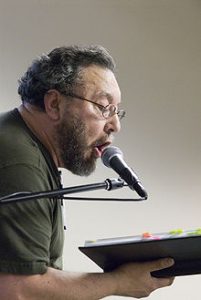 Tyler Chadwick. “On the Problem and Promise of Alex Caldiero’s Sonosophy: Doing Dialogical Coperformative Ethnography; Or, Enter the Poetarium“. PhD Dissertation, Idaho State University
Tyler Chadwick. “On the Problem and Promise of Alex Caldiero’s Sonosophy: Doing Dialogical Coperformative Ethnography; Or, Enter the Poetarium“. PhD Dissertation, Idaho State University
Utah-based poet, artist, and teacher Alex Caldiero calls his performative mode of language-making “sonosophy,” a neologism that can be taken to mean “sound wisdom,” “I am/they are wisdom,” and “I am/they are sounding the wisdom of sound.” Caldiero’s mode of poiesis, which often manifests as disruptive speech acts, calls upon various cultural figures and performance traditions to explore and practice language as a process of communion and relationship-making. I call this intermingling of figures and traditions Caldiero’s performance ecology; it consists of influences that he claims and that can be seen emerging from his lived experience and his personal ideas about sonosophy. These influences include his Sicilian cultural heritage; his mystical experience; his participation in Catholic and Latter-day Saint faith communities and religious rites; the embodied poetics of Allen Ginsberg’s “Howl”; the playfulness of Dada plastic, performance, and language arts; and a tradition of seers that contains (among others) the Paleolithic shaman, the premodern bard, and ancient Hebrew prophets. My dissertation seeks to flesh out this ecology by exploring the ways in which Caldiero can  be seen enacting the history and character of each figure and tradition as he performs. I do this by using a methodology I call “dialogical coperformative ethnography,” a mode of representation and interpretation that begins with ethnopoetic transcriptions of Caldiero in performance and that then uses those descriptions to analyze, contextualize, and interpret patterns across representative work from Caldiero’s oeuvre. Applying this methodology to Caldiero’s work, I suggest that an understanding of his performance ecology can shed light on his performative persona and provide a lens through which to interpret what he seems to be doing with sonosophy and to evaluate its ethical and pedagogical implications beyond its function as a mode of poetry-making. Along the way I draw from my personal experiences to respond to, play with, push back against, and elaborate on the influence sonosopher and sonosophy have been on my presence in the world, my relationships with others, and my thinking about the acts of language- and relationship-making.
be seen enacting the history and character of each figure and tradition as he performs. I do this by using a methodology I call “dialogical coperformative ethnography,” a mode of representation and interpretation that begins with ethnopoetic transcriptions of Caldiero in performance and that then uses those descriptions to analyze, contextualize, and interpret patterns across representative work from Caldiero’s oeuvre. Applying this methodology to Caldiero’s work, I suggest that an understanding of his performance ecology can shed light on his performative persona and provide a lens through which to interpret what he seems to be doing with sonosophy and to evaluate its ethical and pedagogical implications beyond its function as a mode of poetry-making. Along the way I draw from my personal experiences to respond to, play with, push back against, and elaborate on the influence sonosopher and sonosophy have been on my presence in the world, my relationships with others, and my thinking about the acts of language- and relationship-making.
Tyler Chadwick currently teaches at Utah Valley University and Weber State University. He was Poetry Editor at Dialogue in 2012-2015, and has edited the poetry anthology Fire in the Pasture: Twenty-first Century Mormon Poets (Peculiar Pages, 2011), which won an AML Poetry Award, wrote the poetry and essay collection Field Notes on Language and Kinship (Mormon Artists Group, 2013), and is one of the editors of the forthcoming Dove Song: Heavenly Mother in Mormon Poetry (Peculiar Pages).
Poetry
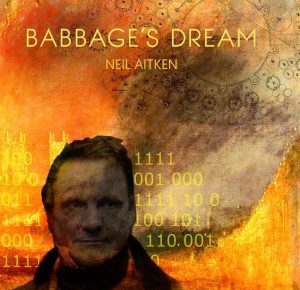 Neil Aitken. Babbage’s Dream. Sundress Publications.
Neil Aitken. Babbage’s Dream. Sundress Publications.
Taking its title from Charles Babbage, the nineteenth-century mathematician, who designed but did not complete what would have been the first mechanical programmable computer, Babbage’s Dream weaves together not only Victorian and contemporary anxieties about the spectacle and threat of new technology, but also offers us lyric redefinitions of computer programming terms and first-person perspectives of literary and historical artificially intelligent others.
Neil Aitken is the author of The Lost Country of Sight, winner of the 2007 Philip Levine Prize, and Leviathan, a poetry chapbook. A former computer games programmer and a past Kundiman Poetry Fellow, he holds both an MFA and PhD in creative writing and is the founding editor of Boxcar Poetry Review. His poems have appeared in many literary journals and anthologies including The Adroit Journal, American Literary Review, Crab Orchard Review, diode, Ninth Letter, and Southern Poetry Review. Of Chinese and Scottish heritage, he was born in Vancouver, British Columbia and grew up in Saudi Arabia, Taiwan, and western Canada before moving to the United States for university and work. He lives in Vancouver, Washington.
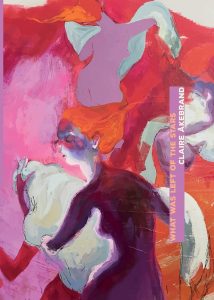 Claire Åkebrand. What Was Left of the Stars. Serpent Club Press.
Claire Åkebrand. What Was Left of the Stars. Serpent Club Press.
Claire Åkebrand is a Swede who grew up in Germany and Utah. Her poetry has appeared in the Manchester Review, BOAAT, the Beloit Poetry Journal, and elsewhere. Her debut novel The Field is White was also published 2017, and is a finalist for the AML NOvel Award. She was shortlisted for the 2017 University of Canberra Vice-Chancellor’s International Poetry Prize judged by Billy Collins. She currently lives in Provo with the poet Michael Lavers and their two children.
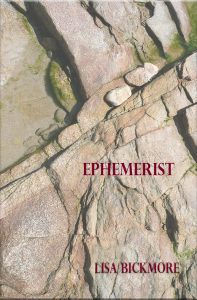 Lisa Bickmore. Ephemerist. Red Mountain Press.
Lisa Bickmore. Ephemerist. Red Mountain Press.
In Ephemerist, the speakers of the poems imagine many provisional homes. They make a study of shelter: in the harbors of memory; in art’s forms and improvisations; in spirit houses; in the body. Each proves transient. In these poems, each speaker finds that the places she thinks she knows are, in the end, knowable only tangentially and partially, if at all. Shelter is a pharmakon, a substance that is both medicine and toxin. The book imagines, as substitution and remedy, a practice of making what cannot last, what will always disappear, a practice that might be termed ephemerism. One speaker seeks an “empty nave where / the icon should go,” suggesting that if it could contain “just the idea / of an altar, I would worship there.” This seeking is a kind of “vigil on which nothing depend[s],” a radical freedom that is both burden and blessing.
Lisa Bickmore‘s poems and video work have appeared in numerous publications, including Quarterly West, Tar River Poetry, Caketrain, Sugarhouse Review, The Moth, Terrain, Mapping Salt Lake City, and Southword. Among her honors are the Ballymaloe International Poetry Prize for 2015, and the 2014 Antivenom Prize for her second book, Flicker (Elixir Press, 2016). She earned a B.A. and an M.A. from Brigham Young University. Currently, she is a Professor of English at Salt Lake Community College, where she was the recipient of the SLCC Foundation Teaching Excellence Award in 2006, and she is also one of the founders of its Publication Center.
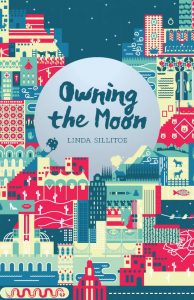 Linda Sillitoe. Owning the Moon. Signature Books.
Linda Sillitoe. Owning the Moon. Signature Books.
In her final poetry collection, Linda Sillitoe transforms ordinary events into thoughtful, funny, and sharp commentaries on the human condition. A mother painstakingly alters a dress for a beloved daughter, and the “cloth and needle weave her daughter’s dreams.” Later a daughter mourning her father’s death remembers how “something vital vanished.” From warning a friend against growing “spoiled just a bit for ordinary men” to trying to “fit this time among our dearest and darkest demons” after moving back to Utah, Sillitoe reveals a world “where poems hold such power,” and each stanza carries multiple meanings. Despite, or perhaps in conjunction with, life’s joy and sorrow, Sillitoe’s verses reveal an unconventional spirit determined to transcribe life’s experiences in a manner that is both accessible and extraordinary, ending with a promise to continue “scribbling warranties in the sand./Over time, we lose what we own/ and learn the motions that bring it back—/like this moon, as caught, as wild, as we.”
Linda Sillitoe (1948-2010) published eight books ranging from journalism and history to fiction and poems. As a staff writer and news feature editor for the Deseret News and Utah Holiday magazine, she received several professional awards, and her articles and series also appeared in The New York Times and the Philadelphia Inquirer. She served as poetry editor for Dialogue and Exponent II and taught college writing and journalism at the University of Utah, Salt Lake Community College and Weber State University. She also followed a reporting assignment into a multi-faceted interest in native tribes and cultures, writing in several genres and co-producing an award-winning documentary. She has received five previous AML Awards: the very first Poetry Award (“The Old Philosopher” and “Letter to a Four-Year-Old Daughter”, 1977), Criticism (“New Voices, New Songs: Contemporary Poems by Mormon Women”, 1980), Poetry and Short Fiction (“Lullaby in the New Year” and “Demons”, 1981), Novel (Sideways to the Sun, 1987), and Poetry (“Crazy for Living”, 1993).
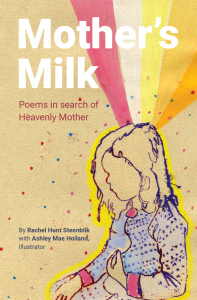 Rachel Hunt Steenblik, with illustrations by Ashley Mae Hoiland. Mother’s Milk. BCC Press.
Rachel Hunt Steenblik, with illustrations by Ashley Mae Hoiland. Mother’s Milk. BCC Press.
For this book, Rachel Hunt-Steenblik wrote 246 small poems exploring aspects of our Heavenly Mother. Ashley Mae Hoiland (One Hundred Birds Taught Me to Fly) complemented these poems with more than 40 original drawings. The result is an intimate discussion of the deep human longing for a Mother God. Carol Lynn Pearson, whose pioneering work created the space, that “Mother’s Milk” occupies, calls this collection “a major step toward filling the Mother-sized hole in our hearts.” And Joanna Brooks predicts that it “will teach the world what Mormon women know—perhaps uniquely—about God.”
Rachel Hunt Steenblik researched Heavenly Mother full-time with David Paulsen and Martin Pulido for the BYU Studies article “‘A Mother There’: A Survey of Historical Teachings of Mother in Heaven.” She also co-edited Mormon Feminism: Essential Writings with Joanna Brooks and Hannah Wheelwright for Oxford University Press, and writes for the Exponent Blog. She is a PhD student in philosophy of religion and theology at Claremont Graduate University, and has a Masters in library science from Simmons College and a Bachelors in philosophy from Brigham Young University. She has participated in summer seminars at the Wheatley Institution (2015), the Maxwell Institute (2014), and St. Olaf College’s Hong Kierkegaard Library (2013 and 2012).
